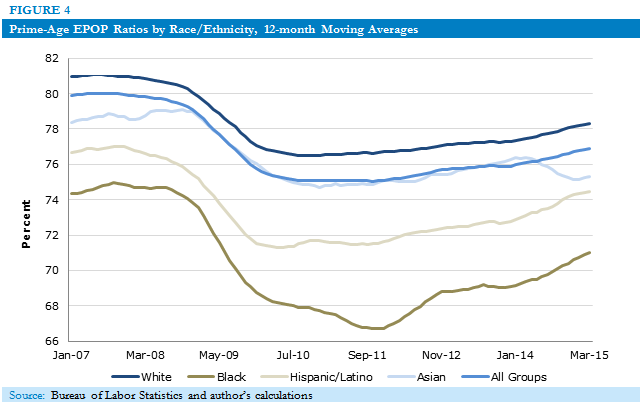Working people between the ages 25 to 54 are typically referred to as “prime-age” workers, meaning that most are old enough to be done with school but are too young to be retired. This is the period in people’s lives when they are most likely to be employed. By examining the employment-to-population (EPOP) ratio for prime-age Americans, we can eliminate the problems posed by the Bureau of Labor Statistics’ (BLS) definition of “unemployment” and the changing age distribution of the population.
The prime-age EPOP ratio stood at 79.7 percent in December of 2007 (when the recession began). In both December of 2009 and November of 2010, the prime-age EPOP ratio hit lows of 74.8 percent, yet these lows appear to be anomalies. In both instances, the prime-age EPOP ratio recovered slightly before falling again. The last significant trough came in September and October of 2011, when the prime-age EPOP ratio fell to 74.9 percent.
Since 2011, the prime-age EPOP ratio has risen steadily; it hit a high of 77.3 percent in February of 2015 before falling back to 77.2 percent in March. If we take the aforementioned trough of 74.9 percent, we can determine that the labor market has made up 48 percent—2.3 percentage points out of 4.8 percentage points—of the employment lost during the recession. In other words, we are less than halfway recovered.
